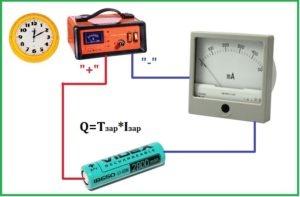
Many stand-alone electronic devices (flashlights, smartphones, laptops, etc.) use lithium-ion batteries as a power source. With small dimensions, they have quite impressive capacitance values.
One of the most popular lithium-ion (Li-ion) batteries are the 18650 series . They look like an ordinary finger-type battery, but its dimensions are 30 percent larger.
The capacity that manufacturers write is impressive: 6000 mAh, 10000 mAh, 20000 mAh ... In fact, the real capacity of such batteries does not exceed 3500 mAh. And this is the best!!! Cheap copies rarely have a capacity of more than 1000 mAh.
Why is this happening? Dishonest "manufacturers" buy batteries at the factory (without inscriptions), glue their label on the case, on which they are free to write whatever comes into their heads.
How to determine the real capacity of the battery when buying?
You can protect yourself from buying a low-quality battery even at the time of choosing a product:
— First of all, a good battery can't be cheap. This is the law of economics! More or less high-quality copies are sold starting from 250 rubles.
- Secondly, pay attention to the mass of the battery. Pick up 2-3 copies of the same capacity. Have you noticed how much they differ in mass? That's it! Get a heavier one. Although ... Crooks have learned to slip crap here too: half of the hull is filled with ... sand. In general, a good 2500 mAh battery weighs 40-45 grams.
Example: this sample, with a capacity of 8800 mAh, weighs 27 grams. Bullshit!!!
Characteristics.
So, the dimensions of this battery are standard: length 65mm, diameter 18mm.
Rated voltage - from 2.75 to 4.2. If the voltage goes beyond this parameter, the battery capacity will be significantly and almost irrevocably reduced. Li-ion battery does not tolerate overdischarge (less than 2.7V) and overcharge (more than 4.2V).
Manually controlling these thresholds is very troublesome. Therefore, it is recommended to use such batteries together with overcharge, overdischarge and short circuit protection circuits.
Temperature conditions of normal operation: from -20 to +60 degrees Celsius. Moreover, it is not recommended to charge at a negative ambient temperature. An exception is lithium-ferrophosphate batteries that can operate in severe frost. Moreover, they are not afraid of deep discharge. Underestimated by the buyer.
How to test a lithium 18650 battery
So, you bought a battery, but doubt the veracity of the information on the case. There are special measuring instruments. But we will not talk about them, because you do not have them. Right?
Let's use the old, good, proven methods.
Method one . Measuring battery capacity while charging
Discharge the battery to a level of 3-3.2V. I don’t advise below - you can accidentally discharge less than the permissible 2.5 V and then ... into the trash can.
Connect to charger. Forget about what capacity is written on the case. Remember that such batteries do not have a capacity of more than 3500 mAh.
Set the charging current to 200-300mAh. Note the charging start time. Check the voltage at the battery terminals every hour. As soon as the voltage reaches 4.2V - your battery is charged!
Fix the time. Count how many hours the charge took place. What was the average current? Now multiply the number of hours by the charging current (mA) - get the actual (real) battery capacity.
Method two . Measurement of battery capacity when discharging.
But that's not all!!! Now let's check the capacity by discharging the battery.
To do this, you need something to load the battery. An ordinary light bulb is very convenient for these purposes. By the level of its glow, in the process of discharging, you can see how close the process is to completion. If there is no light bulb, use resistance.
The discharge current should not be set large. With the first method, you have already determined that the capacity is ... for example, 2000 mAh. Discharge with a load that should theoretically drain your battery in 10 hours. In our case - 200mA.
Note the start time of the experiment. From time to time, monitor the voltage at the battery contacts and the discharge current. As soon as the voltage drops to 3.2V, turn off the load. Fix the time.
The calculation is just as simple: Number of discharge hours times average load current = battery capacity.